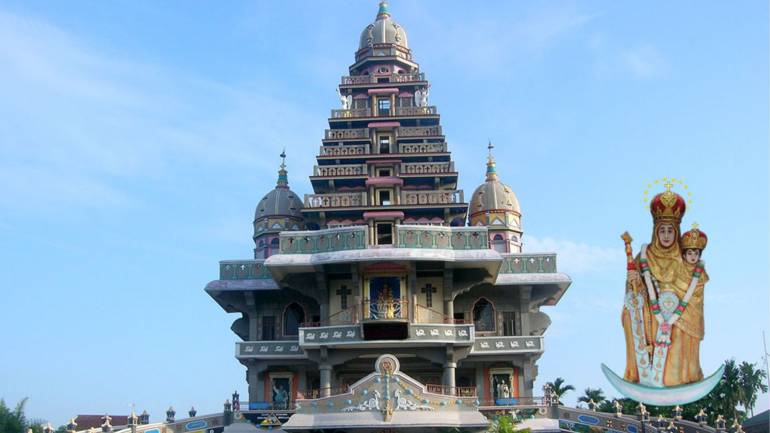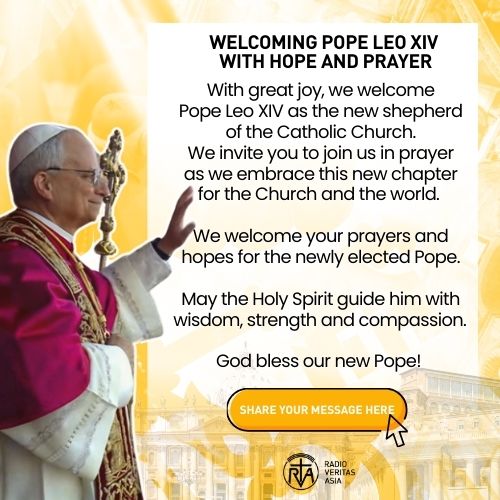Graha Maria Annai Velangkanni: A Home for All Faith

The seven-story tower, which has three domes, symbolizes heaven.
Graha Maria Annai Velangkanni, located in Medan, North Sumatra, Indonesia, is an exceptional Catholic church.
Its remarkable Indo-Mughal architecture casts doubt on its authenticity as a Hindu or Buddhist temple.
People of all racial and religious backgrounds are welcome in the seven-story tower with three domes because there are no overt Catholic symbols there.
An Architectural Marvel: Heaven on Earth
Graha Maria Annai Velangkanni. With its Indo-Mughal architecture, it may be easily mistaken for a Buddhist or Hindu temple.
Its exterior has no Catholic symbols, and the impression is interfaith.
All faiths and races, regardless of social status, are welcome.
The architectural designs reflect different faiths.
The pillars of the shrine's wall sculpted the various races in appropriate dresses. It symbolizes the brotherhood of people, regardless of faith, culture, and race.
In the distance, the pagoda on top of the church would give off the impression of a Buddhist or Hindu temple.
Indian and Chinese characters ornate the structure.
Located in Medan, the capital of the Indonesian province of North Sumatra, this Catholic church opened in 2005.
This Marian shrine, dedicated to Our Lady of Good Health, was constructed with two floors and a tower of Indonesian architecture. The seven-story tower, which has three domes, symbolizes heaven.
The ground floor serves as a community hall. The first floor is the worship area.
Mosque-like arches were designed for the ground floor's entrance.
The open space in the hall looks like a musallah (a prayer hall in mosques).
The hall has no door, giving the message that everyone is welcome regardless of faith, culture, or race.
Lamps illuminate the ramps. The lamp conveys that the faithful walk in the light on life's journey.
Forty lamps are illuminating the ramps. Each lamp also reminds us of the forty days of Christ's fasting in the wilderness.
The ramps were embedded with crosses. Each cross reminds the faithful that life's journey is full of challenges.

Local Culture: The Entrance Arc
Our Lady of Good Health revealed herself in a 17th-century apparition in Velangkanni, Tamil Nadu.
The shrine was the idea of Fr. James Barathaputra, a Jesuit priest from India.
The priest, who has served over five decades in Indonesia, built the church to make the Catholics stronger in their faith and to offer the non-Catholics an experience.
The money for the construction of the church came from donors of different faiths and nationalities, including Indians, Malaysians, Singaporeans, and others.
The Indonesians funded the majority of the church's construction. Earthquakes up to 9 on the Richter Scale can't damage it.
Dr. Ir. Johannes Tarigan, a Catholic engineer, supervised the church's construction for free.
The entrance arc displays the local culture.
The shrine is about eight kilometers southwest of the center of Medan, the largest city in the Indonesian province of North Sumatra.
Visitors can take a bus or a cab from the airport to get to the shrine. One can also take a train to get there.
Graha Maria offers accommodations to pilgrims and tourists alike. The accommodation facility, known as Bethany, is based on Mary and her siblings' New Testament home.








